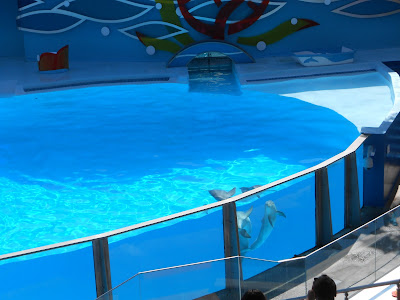THEME:
BUGS
CHILDREN AGE: 3-4 years
USED MATERIALS, TOOLS: magnifying glasses, real live ants. For arts: big cardboard for base paper; green and brown gouache colores and clay; green color silk paper; from out side gathered natural materials (pine thorns and sticks) to make anthill. PVA-clay and brushes. From paper cut out bugs, tree, cherry and from nature found snail-shell.
OBJECTIVES: The child learns how to watch the little ants with the magnifying glass. The child knows the bugs - bee, ant, cricket and snail. The child knows that the ants are the oldest animals in the planet and they still live on. The child knows that ants are useful because they eat greenflys.
The child can cover the base paper with clay, glues and sprinkles torn paper, pine thorns and figures of animals on it. The child listens the story told by teacher. The child can play certain part in table theater "Ant has a problem". The child knows that the ant has 6 legs and can count them. The child knows that the scene takes place in season summer.
PREPARATIONS: The teacher has read the story "Ant has a problem" to the children several times. The teacher has organized all needed materials fro the activity and put them ready in the classroom.
ACTIVITY:
In the beginning of the activity the
children learn about the bugs. They name the bugs who are on the pictures. They talk about where they live, what they eat, how they look like and so on. They the teacher lets them study the ants with magnifying glasses.
The children together with teacher are making an art work based on the Belgium story. They tear green silk paper into pieces, they put green colored clay on the base paper and glue the silk paper pieces on it. They make from PVA-clay and pine thorns big anthill. They glue pine trees on the base paper.

The children play on table theater and they tell the story in a couple of sentences. They play in group of fives: one plays ant, second snail, third cricket, fourth bee and fifth is storyteller. Every actor describes its animals looks and tells what the animal eats, where he/she has seen the animal, where is the animals home.
The children count how many actors are on tabel theater. They also answer question, how many legs has ant and they count the legs.
The children realized that if they work together then the hardest work can be very pleasant: Great power lies in friendship.

The children found great interest in making arts and playing in table theater. We will play the story in table theater as long the children want to.






















































